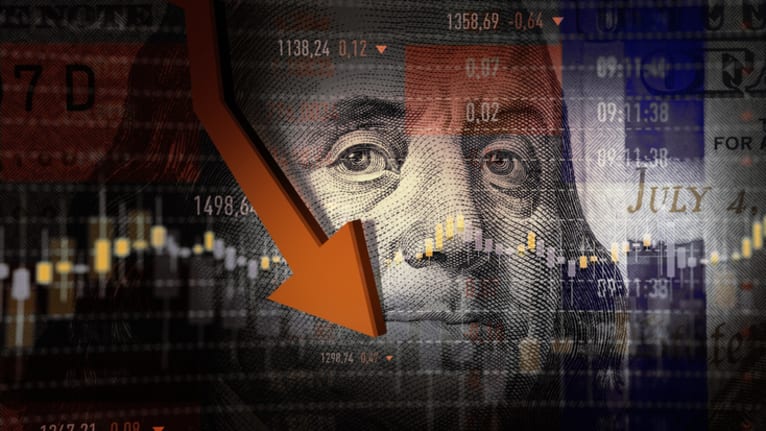

?Is the United States in a recession? Some signals say yes, yet the latest employment report from the Bureau of Labor Statistics (BLS) is strong evidence against being on the cusp of a looming recession—at least not in the way they’ve historically been experienced.
U.S. employers added over half a million new jobs in July, far surpassing economists’ forecasts, and the unemployment rate ticked down to 3.5 percent, close to what is considered full employment and a half-century low. Overall employment has finally returned to its pre-pandemic level, and private-sector payrolls are now larger than in February 2020.
On the other hand, the latest gross domestic product (GDP) report, which tracks the overall health of the economy, showed a second consecutive quarter of negative growth, meeting the textbook definition of a recession. And head winds from the highest inflation in four decades and rising interest rates may be starting to influence other employment metrics, which have started to soften. Jobless claims have been steadily edging higher this year, and some companies have announced hiring freezes or layoffs in recent weeks.
But employers typically stop hiring in a recession, and the latest jobs report shows the opposite. “This is a job market that just won’t quit,” said Becky Frankiewicz, chief commercial officer and president, North America at ManpowerGroup. “It’s challenging the rules of economics. The economic indicators are signaling caution, yet U.S. employers are signaling confidence. The GDP is shrinking, yet corporate earnings keep growing. Consumer confidence is falling, yet employee turnover remains high. Job openings still outnumber job seekers. Meanwhile, inflation is surging, and wages keep rising. If a slowdown is coming, employers certainly haven’t gotten the memo,” she said.
What Recession?
Daniel Zhao, senior economist at Glassdoor, said that the job market is pushing ahead, despite a rising tide of recession fears. “Even as the broader economy shows signs of slowing, the labor market remains a pillar of strength,” he said. “The labor market is likely to slow in the coming months, but for now, it remains red hot.”
There are no signs of a recession in the labor market data, agreed Nick Bunker, the economic research director for North America at the Indeed Hiring Lab. “Over the past three months, employers have added an average of 437,000 jobs a month, a remarkable indication of a tight labor market with exceptionally strong demand for workers.”
Julia Pollak, chief economist at ZipRecruiter, noted that upward revisions to employment in May and June combined for 28,000 more jobs in the second quarter than previously thought. “Job gains remain well above their 2011–2019 pace, when 194,000 payrolls were added per month, on average,” she said. “Job gains are profound and pervasive.”
Despite some high-profile cases of layoffs, job cuts are not a trend, said Rucha Vankudre, senior economist at labor market analytics firm Lightcast. “We are not seeing, for the most part, increases in layoffs at all,” she said. “There are a few companies that really built up their labor force and so now maybe they’re cutting back to regular levels, but that doesn’t necessarily signal anything for the labor force as a whole. It’s more likely that employers are taking down job postings for positions they couldn’t fill.”
Inflation Tensions
The tension between high demand for labor and declining labor-force participation continues to make wage inflation—and a possible recession—a key concern. The labor-force participation rate—or the share of adults working or seeking a job—ticked down to 62.1 percent in July from 62.2 percent a month earlier.
Average hourly earnings grew 5.2 percent year-over-year in July, putting pressure on the Federal Reserve to continue tightening. “With demand for workers so high, and wage growth continuing to be strong, the risk is that the Fed is going to interpret that as pushing up inflation and continue to hike interest rates very, very quickly, pushing the economy into a recession,” Bunker said.
Pollak cited another troubling data point in the July employment report: the number of people working part time for economic reasons moved in the wrong direction, increasing by over 300,000 to 3.9 million.
‘A Unique Time’
Yet, economists seem to agree that if the U.S. is in a recession, it’s unlike any previous one.
“This is going to be about the most pleasant way to go through a recession,” said Ron Hetrick, senior economist at Lightcast. “Employers are still starving to get employees. They were never able to hire them when they had so much demand. I absolutely believe this is not going to be the kind of pain that we usually associate with a recession, historically speaking.”
The Biden administration and the majority of economists have said that a cooling labor market is inevitable, and that monthly job growth must begin to slow down, but July’s BLS report shows that that transition has not yet occurred.
“This just really continues to be a sign that there is sort of a disconnect between what we’re seeing in the larger economy versus the labor market,” Vankudre said. “In the labor market, hiring is still very high. Quits are still at pretty high levels. Layoffs are not coming up the way people expected. And this jobs number was really huge. I think it really just points out what a unique time we’re in right now and that predictions are going to be hard to make.”
